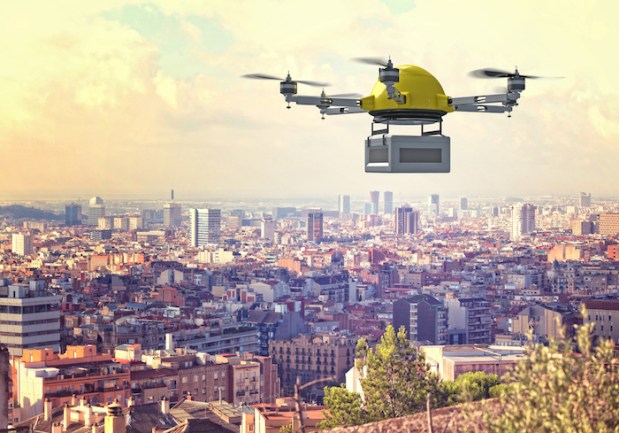FAA Sends Drone Deliveries Crashing Down To Earth

It seems like everyday there’s a new bit of news leaking out about some retailer in the world making a breakthrough with self-navigating delivery drones. Maybe an online marketplace in China manages to reach more rural areas, or maybe an American startup finds a way to improve collision detection software. Whatever the cause, it’s part of why drone deliveries can start to feel so inevitable.
Unless you’re the Federal Aviation Administration. If that’s the case, then drones still have a lot to prove.
After what seemed like an excruciating wait, the FAA has finally released updated regulations on the use of commercial drones in U.S. airspace, and the news isn’t good for the likes of Amazon’s high-flying delivery robots. While the policy includes plenty of miscellany – drones must fly no higher than 400 feet and can’t exceed weights of 50 pounds – there is one massive dagger to the heart of Amazon’s ambitions: Drones must always fly within line of sight of a human operator.
The rule stems from FAA logic on what they call “unprotected persons,” which drones are prohibited from flying over. In fact, the agency’s press release makes little note of drones’ commercial potential at all, focusing instead on the fact that its primary purpose is to ensure the safety of this next generation of airborne transportation before seeing to its commercial potential.
“We are part of a new era in aviation, and the potential for unmanned aircraft will make it safer and easier to do certain jobs, gather information, and deploy disaster relief,” U.S. Transportation Secretary Anthony Foxx said in a statement. “We look forward to working with the aviation community to support innovation, while maintaining our standards as the safest and most complex airspace in the world.”
So while Amazon won’t be able to strap packages to drones and send them off into the wild blue yonder just yet, the FAA didn’t completely stymie any such possible future. In fact, FAA Administrator Michael Huerta hinted that the agency is “already working on additional rules that will expand the range of [drone] operations.”
So don’t feel too bad for Amazon, if only because these rules will leave them with plenty of cash to throw back into drone R&D.
While the FAA’s updated policies might not pave the way for commercial drone use, they do straighten out some kinks in the process of buying and flying a piloted quadcopter. Before the rules, businesses interested in drones for surveying or maintenance monitoring had to apply to the FAA for permits, which had backlogged into the thousands by the time these regulations were passed. Now, instead of having to complete requirements equivalent to a traditional pilot’s license, commercial drone operators now have their own competency tests and approval process.
“This is a major development for the future of drones in America,” Adam Lisberg, spokesman for drone manufacturer DJI, told The Verge. “It means that businesses and farmers and government agencies and academic researchers can put drones to work without having to get an airplane pilot’s license or follow other onerous rules. Those were pretty high barriers to entry.”
So while Amazon might still be months or years away from shipping packages with drones, these regulations do give them and other retailers the next best thing: a massively upgraded capacity to sell drones themselves to consumers and companies without fear of regulatory reprisals.
It’ll just be a little while before those drones can be delivered via drones themselves.
